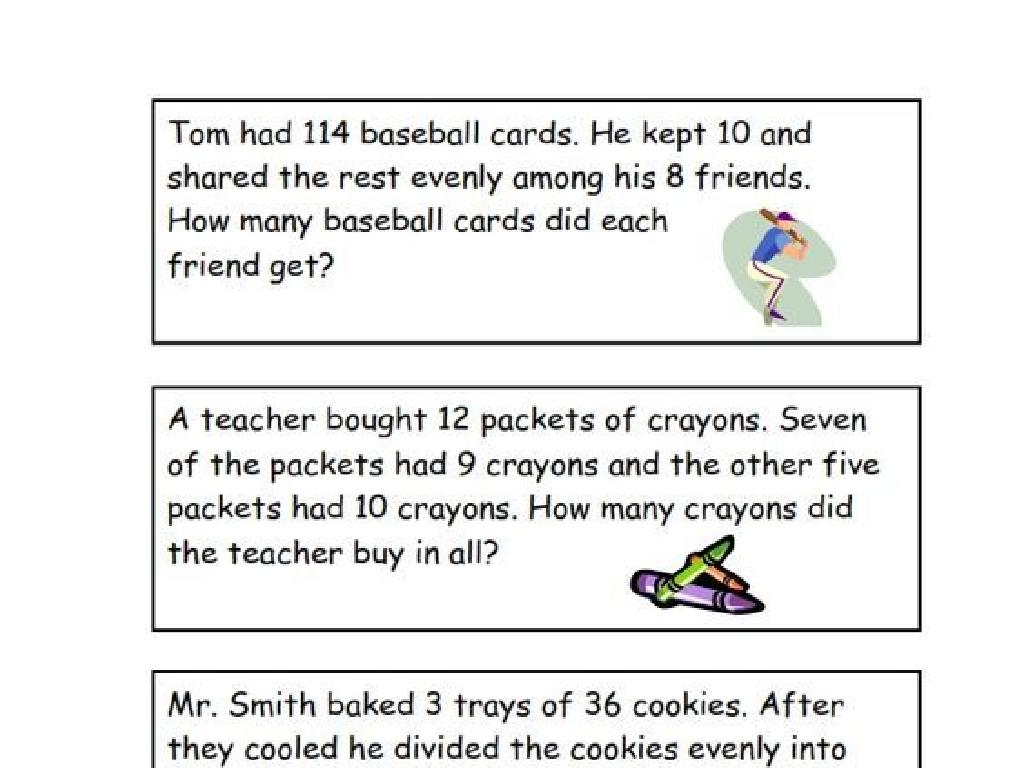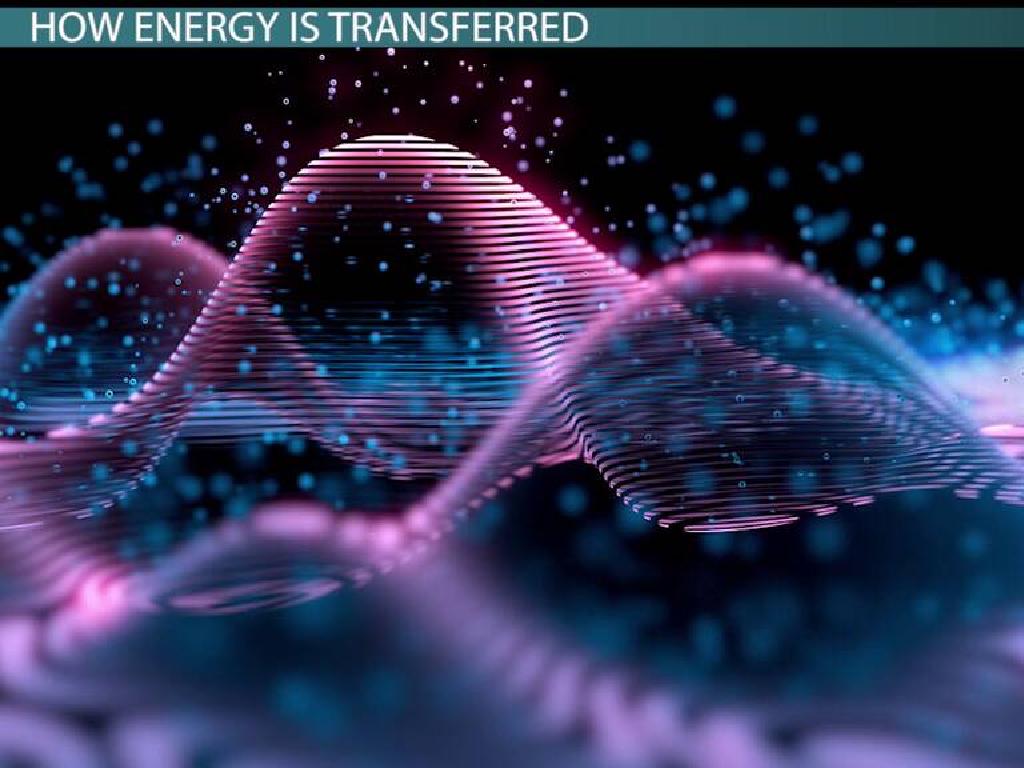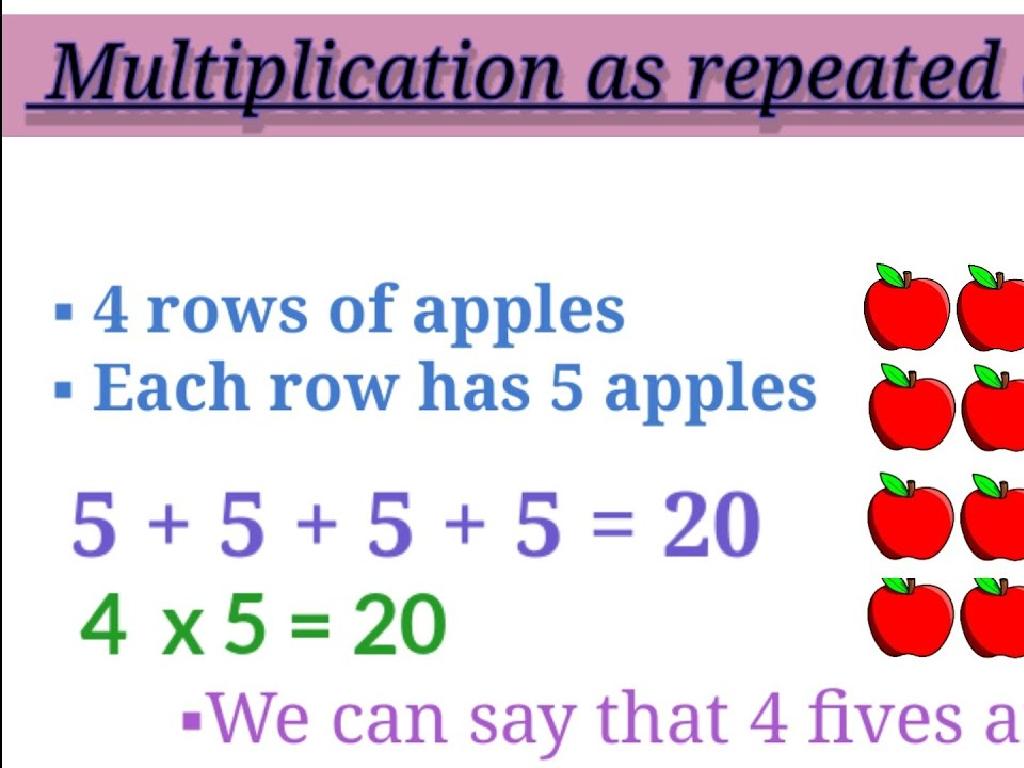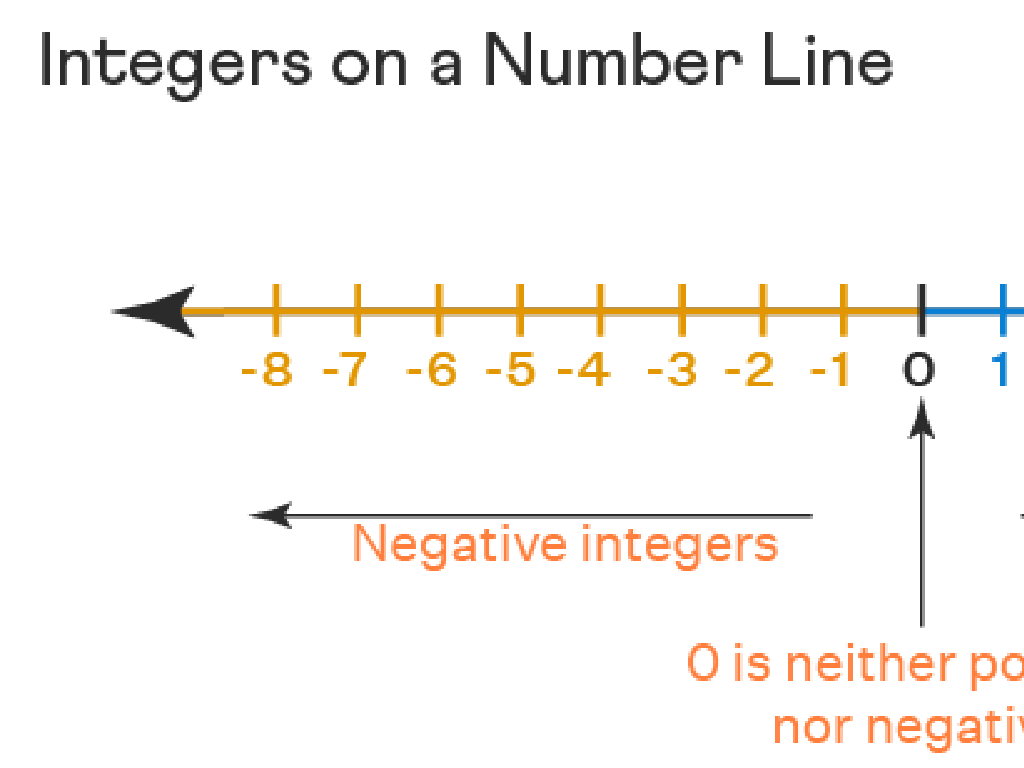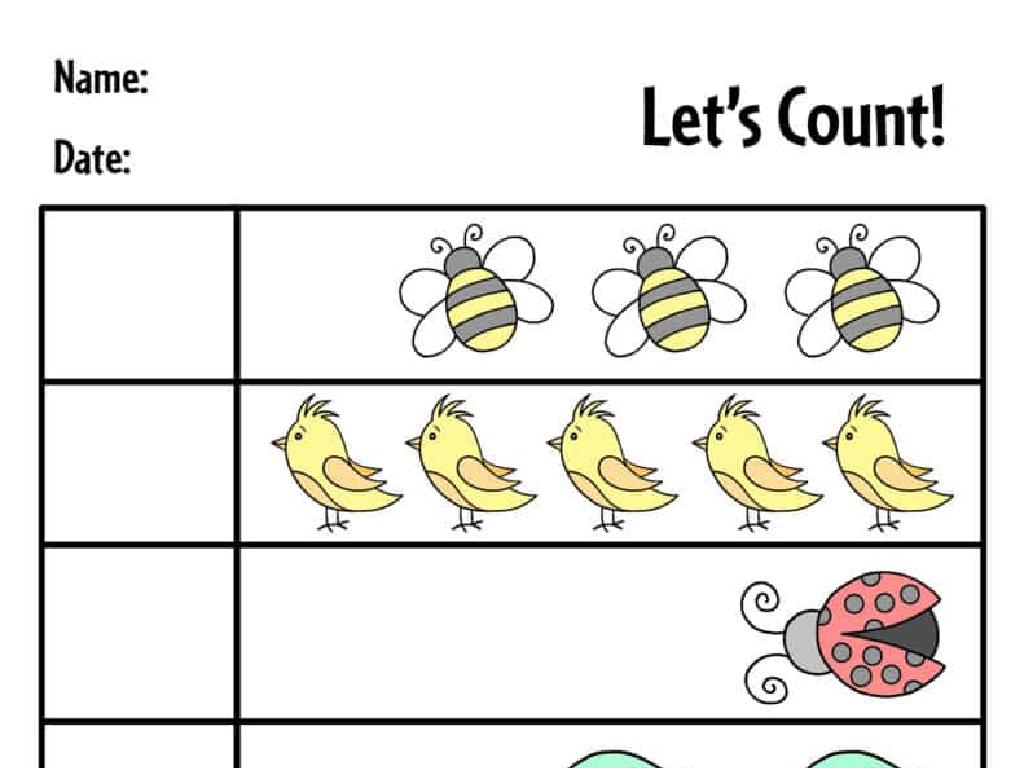How Do Plants Make Food?
Subject: Science
Grade: Fifth grade
Topic: Plants
Please LOG IN to download the presentation. Access is available to registered users only.
View More Content
Welcome to the World of Plants!
– Explore the plant kingdom
– Why plants are vital
– Plants give us oxygen, food, and more
– Overview of photosynthesis
– Photosynthesis: plants’ food-making process
– Key elements plants need
– Sunlight, water, and carbon dioxide are crucial
|
This slide is designed to spark curiosity about the plant kingdom and its crucial role in our ecosystem. Begin by introducing the vast diversity within the plant world. Emphasize the importance of plants to life on Earth, including how they provide oxygen, food, and numerous resources. Give a preview of photosynthesis, the process by which plants convert sunlight into energy, and highlight the key elements needed for this process: sunlight, water, and carbon dioxide. This sets the stage for a deeper dive into the specifics of photosynthesis in subsequent slides. Encourage students to think of questions they have about how plants grow and sustain themselves.
What Are Plants?
– Plants are living organisms
– Like animals, plants grow, reproduce, and need energy
– They play a key role in ecosystems
– They provide oxygen and food, and create habitats
– There are diverse plant types
– From tiny mosses to giant trees, variety is vast
– Understanding plant variety
|
This slide introduces the concept of plants to the students, emphasizing that plants are living organisms with needs similar to animals, such as the need for energy, the ability to grow, and the capacity to reproduce. Highlight the crucial role plants play in ecosystems, such as producing oxygen through photosynthesis, providing food for a variety of organisms, and creating habitats for other life forms. Discuss the diversity of plant life, from small mosses and grasses to large bushes and trees, and encourage students to think about the different types of plants they encounter in their daily lives. This sets the stage for understanding how plants are an integral part of our planet’s life system.
Photosynthesis: The Food Factory
– What is Photosynthesis?
– It’s how plants make their food using sunlight.
– Importance of Photosynthesis
– Plants produce oxygen and food that all living things need.
– Photosynthesis Equation
– CO2 + H2O + sunlight = C6H12O6 + O2
– Role in the Ecosystem
|
Photosynthesis is a critical process where plants use sunlight to convert carbon dioxide and water into glucose, a sugar that serves as their food, and release oxygen as a byproduct. This process is essential not only for plant survival but also for providing the oxygen we breathe and the food we consume. The simple equation for photosynthesis helps students understand the reactants and products of this chemical reaction. Emphasize the importance of sunlight in this process and how it powers the growth of plants, which are the foundation of most food chains. This slide will help students appreciate the role of plants in our ecosystem and the significance of photosynthesis in sustaining life on Earth.
The Ingredients for Plant Food
– Sunlight: Plants’ energy source
– Sun provides energy for photosynthesis
– Water and minerals: Absorbed by roots
– Roots collect water and nutrients from soil
– Carbon dioxide: Taken from the air
– Leaves absorb CO2 through tiny openings
– Photosynthesis: The food-making process
|
This slide introduces the essential components required for plants to produce their own food through the process of photosynthesis. Sunlight is the primary energy source that drives this process. Water and minerals are absorbed from the soil through the plant’s roots, providing necessary nutrients. Carbon dioxide, a key ingredient, is taken from the air around us. These elements come together in the plant’s leaves during photosynthesis to create glucose, which is the food that plants use for energy and growth. Encourage students to think about how these ingredients are similar to what they might use to make food at home, drawing parallels to cooking or baking.
The Process of Making Food in Plants
– Chlorophyll: The Green Pigment
– Chlorophyll gives plants their green color and helps in photosynthesis.
– Plants Absorb Sunlight
– Leaves act like solar panels, capturing light energy.
– Chemical Reaction in Leaves
– Sunlight, water, and carbon dioxide react to form glucose.
– Photosynthesis: Food Making
|
This slide introduces the concept of photosynthesis, the process by which plants make their own food. Chlorophyll is a key component, as it gives plants their green color and plays a crucial role in capturing sunlight. Explain how leaves absorb sunlight and use it as energy to convert water and carbon dioxide into glucose, a type of sugar that plants use for food. This chemical reaction occurs in the chloroplasts within the leaves. Emphasize that photosynthesis is essential for life on Earth as it provides food for plants and oxygen for us to breathe. Engage students by asking them to think about how plants grow in different environments and the importance of sunlight for plant growth.
What Happens to the Food Plants Make?
– Glucose: Plant’s food
– Glucose is a sugar plants make during photosynthesis.
– Storage in roots, fruits, seeds
– Plants store glucose for later use, like in carrots or apples.
– Growth: Uses of glucose
– Glucose helps plants grow by building cell walls and more.
– Photosynthesis: A recap
|
This slide explores the journey of glucose in plants after it is produced through photosynthesis. Glucose serves as the primary energy source for plants, fueling their growth and development. It’s important for students to understand that glucose is not just used immediately but is also stored in various parts of the plant, such as roots like in carrots, fruits like apples, and seeds for future use. This storage allows plants to have energy available during periods when photosynthesis might not be possible, such as at night or during the winter. Additionally, glucose is vital for growth, as it is used to create cellulose for building strong cell walls, among other things. A brief recap of photosynthesis can be included to remind students how glucose is produced. Encourage students to think about the different parts of plants they eat and what they might be eating (stored glucose or plant energy).
The Importance of Photosynthesis
– Photosynthesis produces oxygen
– Plants release oxygen as a byproduct, which is essential for our breathing.
– It’s the start of the food chain
– All food chains begin with plants making food, supporting life on Earth.
– Photosynthesis cleans our air
– Plants absorb carbon dioxide, helping to reduce greenhouse gases.
– Essential for ecosystems
|
Photosynthesis is a crucial process that plants use to make their own food from sunlight, water, and carbon dioxide. This slide emphasizes the importance of photosynthesis in producing oxygen, which is vital for the survival of almost all living organisms as they rely on it for respiration. Additionally, photosynthesis is the foundation of the food chain, as plants are primary producers that support herbivores, which in turn support carnivores. The process also has a positive environmental impact by absorbing carbon dioxide, a greenhouse gas, thus helping to clean the air and regulate the Earth’s atmosphere. Understanding the role of photosynthesis in ecosystems allows students to appreciate the interconnectedness of life and the importance of plant conservation.
Class Activity: Observing Photosynthesis
– We’ll observe how plants make food
– List of materials for the experiment
– Beakers, water, plants, sunlight, and CO2
– Make predictions about the outcome
– What changes do you expect in the plant?
– Discuss our observations next class
|
This activity is designed to give students a hands-on experience with photosynthesis. Provide each student or group with the necessary materials: beakers, water, plants, and a source of sunlight and carbon dioxide. Guide them to make predictions about what they think will happen to the plant during the experiment. Encourage them to consider what they know about photosynthesis and how plants use sunlight to produce food. After the experiment, students will share their observations and discuss whether their predictions were accurate. This will help solidify their understanding of the photosynthesis process. Possible activities include observing changes in oxygen levels, leaf color, or bubbles produced by the plant in water.
Photosynthesis: How Plants Feed Us All
– Recap of photosynthesis process
– Plants convert sunlight into food energy
– Importance of plants to Earth
– They produce oxygen and support food chains
– Quick quiz to test understanding
– A fun way to review key concepts
– Reflect on what we’ve learned
|
This slide aims to summarize the process of photosynthesis and reinforce the importance of plants to life on Earth. Begin by recapping the steps of photosynthesis, emphasizing how plants convert sunlight into glucose and oxygen. Highlight the role of plants in producing oxygen for us to breathe and forming the base of food chains. Engage the class with a quick quiz to test their knowledge on the topic, ensuring active participation. Conclude by reflecting on the interconnectedness of life and the critical role plants play in our ecosystem. Encourage students to think about how plants affect their daily lives and the environment.
Class Activity: Our Mini Greenhouse
– Build your own mini greenhouse
– Observe how plants grow
– Watch for changes in your plant each day
– Journal your plant’s progress
– Note plant height, leaf size, and color
– Discuss observations in class
|
In this hands-on activity, students will construct a mini greenhouse to understand the conditions under which plants grow and make their own food. Provide students with clear plastic containers, soil, seeds, and water. They will plant the seeds and create a greenhouse environment by sealing the containers to retain moisture and warmth. Over the following weeks, students should observe their plants, noting growth, leaf development, and any other changes. They should record these observations in a journal, making this a daily or weekly routine. This will help them learn about plant life cycles and the factors that affect plant growth. At the end of the observation period, facilitate a class discussion where students can share their findings and reflect on what they’ve learned about how plants make food.

